Tips to Avoid Bonking While Hiking and What to Do if You Hit the Wall

What are the symptoms of bonking?
I’ll never forget the first time I bonked. During my high school years, I went on a bike ride with a good friend and his dad. Little did I realize they were competitive road cyclists, while I was a relative novice. After a couple of hours of riding, I suddenly ran out of gas. I literally felt like I couldn’t pedal any further and that was the first time I heard the word “bonk,” much less felt its full force.
Then, in college, I “hit the wall” during my first marathon at around mile 18 and my pace suddenly slowed significantly. Back then, in the mid-1980’s, we did not know as much about bonking and hitting the wall; but since then, with advancements in training and nutrition we have a much better understanding of these conditions.
Bonking, coined in cycling circles, and hitting the wall, famous among runners, are essentially the same terms. As a hiking guide, when my clients’ “wheels fall off” I am referring to a similar condition. From a physical standpoint, regardless of what you call it, the victim has reached the limits of their nutritional reserves and practically speaking have literally run out of gas.
 RXBAR Minis protein bars vary from 100-110 calories and help prevent bonking.
RXBAR Minis protein bars vary from 100-110 calories and help prevent bonking.
What does “hit the wall” mean?
What it looks and feels like is a marked decline in their performance. Forward progress either slows to a crawl or stops altogether. Other signs of bonking while hiking are lethargy, apathy, irritability, and sometimes either acute hunger or nausea. Having experienced it myself on more than one occasion, I can definitively say that you will know when you bonk. Your inability to maintain your previous pace is unmistakable because so sudden and significant.
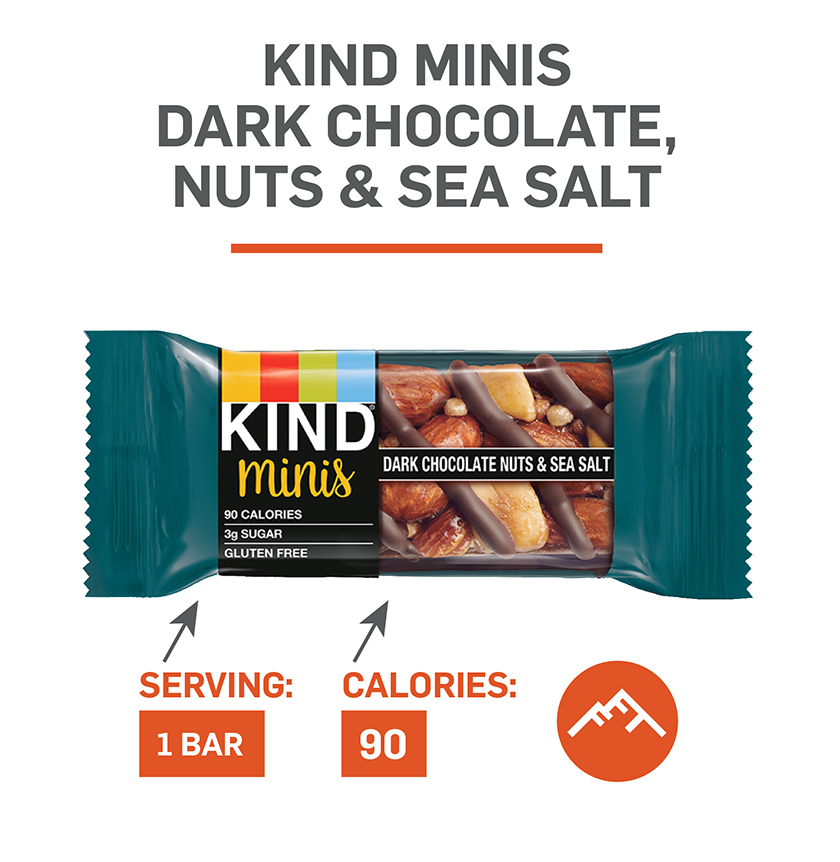 KIND Minis range from 80-100 calories and are crunchy, delicious, and keep you from hitting the wall.
KIND Minis range from 80-100 calories and are crunchy, delicious, and keep you from hitting the wall.
Why does “bonking” happen?
The root cause of bonking while hiking is a nutritional imbalance that leaves your body without a ready source of fuel to burn. When you attempt an endurance event, most of us have a certain amount of fuel on board in the form of blood sugar and glycogen. For most people who don’t take on any additional calories, this fuel source will last around 2-hours. When it runs out, and you feel like crap, is when your wheels have fallen off and you have hit the wall or bonked.
 Satisfying trail mix bags range from 190-200 calories, which helps keep you energetic.
Satisfying trail mix bags range from 190-200 calories, which helps keep you energetic.
As an important note, you can train your body to burn fat – our most plentiful fuel source – through diet and disciplined eating. This is one of the aspects that Keto dieters like to tout. So, for them, theoretically it is harder and takes longer to bonk. Many may say that it is impossible for them to bonk. While that may be true for some, I have had several “Keto” clients flame out quite spectacularly while hiking. So, let’s acknowledge that the gap between theory and practice is real and you don’t want to be unprepared should you fall into that gap.
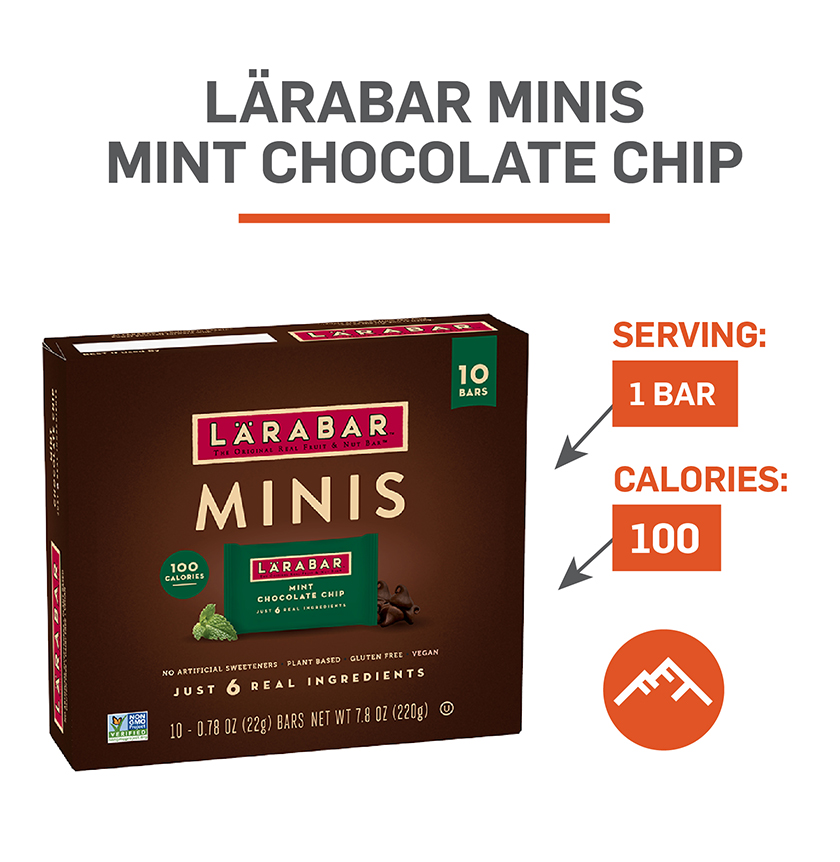 LARABAR Minis calorie content range from 100-110 calories. They are tasty and great to prevent bonking while hiking.
LARABAR Minis calorie content range from 100-110 calories. They are tasty and great to prevent bonking while hiking.
What to eat to prevent bonking?
Hitting the wall and bonking while hiking, backpacking, and trekking are preventable. With thorough training and preparation, as well as paying diligent attention to your nutrition, many cases of the wheels falling off can be avoided. Most people focus on their cardio, strength, and flexibility training during their preparation for an endurance event. Nutrition is generally the most forgotten piece.
A complete meal the night before and something to eat an hour or two before beginning a training evolution of 2 or more hours sets you up for success. While I don’t offer specific meals because your tastes are personal, I do recommend that your meals be a 40/30/30 balance of carbs/fats/protein. Whole foods generally make the best fuel, and I always recommend my clients to limit inflammatory things such as processed foods with high sugar content, alcohol, and any foods to which you might be sensitive. Unless you are a well-trained and experienced Keto practitioner who knows that their body is an efficient fat burning machine (very few people are by the way), I recommend trying to consume at least 200 calories an hour when hiking or doing any other endurance activity ( I give some examples below).
Example of the 40/30/30 nutrition breakdown for a 2000 calorie diet:
40% Carbohydrates: 800 calories = 200 carbohydrate grams
30% Fats: 600 calories = 67 fat grams
30% Proteins: 600 calories = 150 protein grams
During endurance activities, defined by steady movement for at least 2 or more hours, your body will burn more calories per hour than it can readily absorb, so you will be calorie deficient no matter what. Eat before you are hungry, because once you feel depleted you are really behind the power curve. If you practice this during training, then during the actual event your body will be used to eating while moving, which will help you prevent hitting the wall. The other thing you will learn is which foods work best for you and what you find most appetizing when you are exercising.

How do I stop myself from bonking when I hike?
For the above reason, while I can recommend foods to eat during hiking, you should test everything beforehand to ensure you like the taste and that it doesn’t upset your stomach. Endurance drinks with carbohydrates and electrolytes are the most easily absorbable form of energy. I personally like the Hammer Nutrition brand. Their HEED (High Energy Electrolyte Drink) is a great choice for a carb-only product, while their Perpetuem is a solid “carb/protein/healthy fat option”. To mix it up, energy gels and gummy/jellybean type products are very easily absorbable and fast acting. GU are the original gels that I’ve used for 25 years (all GU gels are 100 calories). I eat their chews as well (out of stock) and tend to pick ones that have caffeine in flavors that I prefer. Jelly Belly Sport Beans are also a favorite option of mine to mix things up a bit.
Potato chips are a great way to get easily digestible high-salt carbs on board. Dried fruits and nuts, i.e., trail mix, are usually reliable and most people find them appetizing. The brand of trail mix that I prefer is Power Up. They have a variety of choices in premeasured 200 calorie packs which makes it easy to know exactly how much fuel I’m putting in my body.
Eating a mix or match of these type of foods as well as fruit (bananas, apples, clementine’s, cherries), vegetables (carrots, sugar snap peas, cucumbers, pickles) and other nutritious, whole foods (baked sweet potatoes and tuna, smoked salmon, or chicken for animal protein) – all of which you have tested during your training – should prevent you from hitting the wall.
MINI bars generally have around 100 calories, which makes it easy to track energy requirements per hour: RXBAR minis (regular size in stock) | KIND minis | LARABAR minis
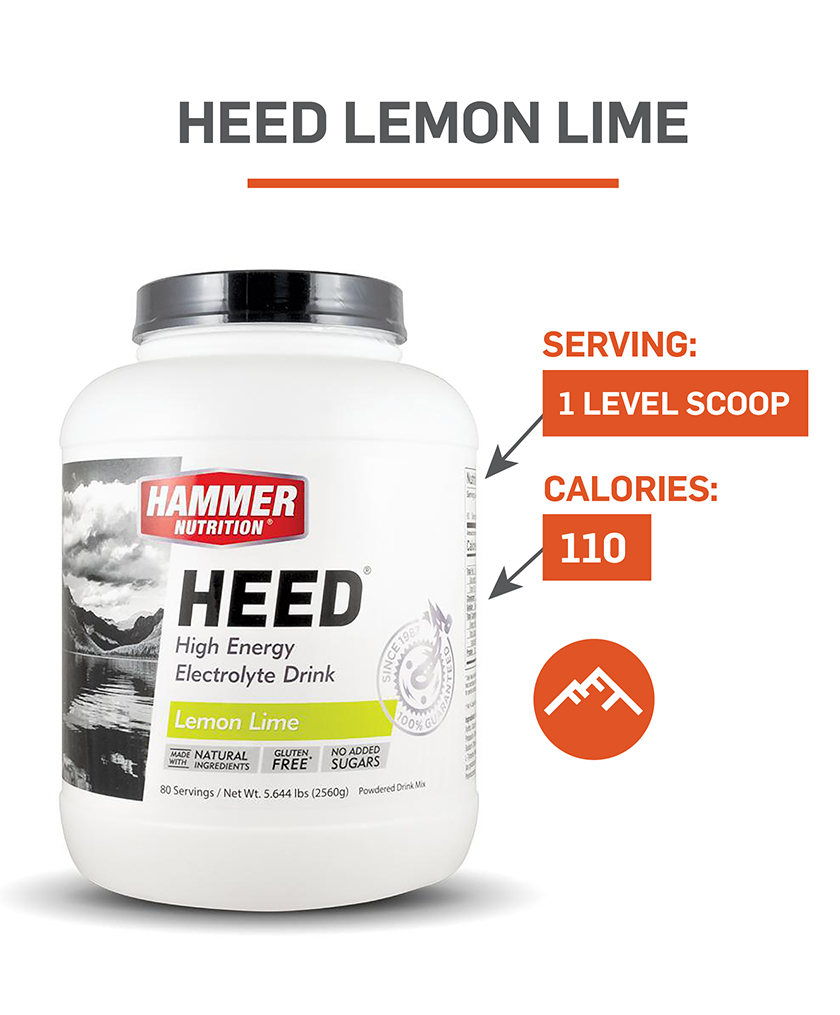 High Energy Electrolyte Drink has 110 calories per serving. Chug this if you are bonking while hiking.
High Energy Electrolyte Drink has 110 calories per serving. Chug this if you are bonking while hiking.
For rim-to-rim hikes or other all-day adventures, I usually recommend people bring a sandwich or other “real meal” type foods and take a longer break at some point during their hike to take on a significant number of calories. You will feel better and go a long way toward keeping your wheels from falling off in the later part of your effort. I’ll recommend or provide a layout of more real meal foods prior to a trip. Examples of what I provide include hard boiled eggs, non-dairy yogurt, nut butter and jelly/honey for sandwiches; chicken, tuna, smoked salmon, or turkey and cheese for neat protein sandwiches; chips, fruit, mini-smoked sausage, Baby Bell cheese rounds, and crackers for snacks.
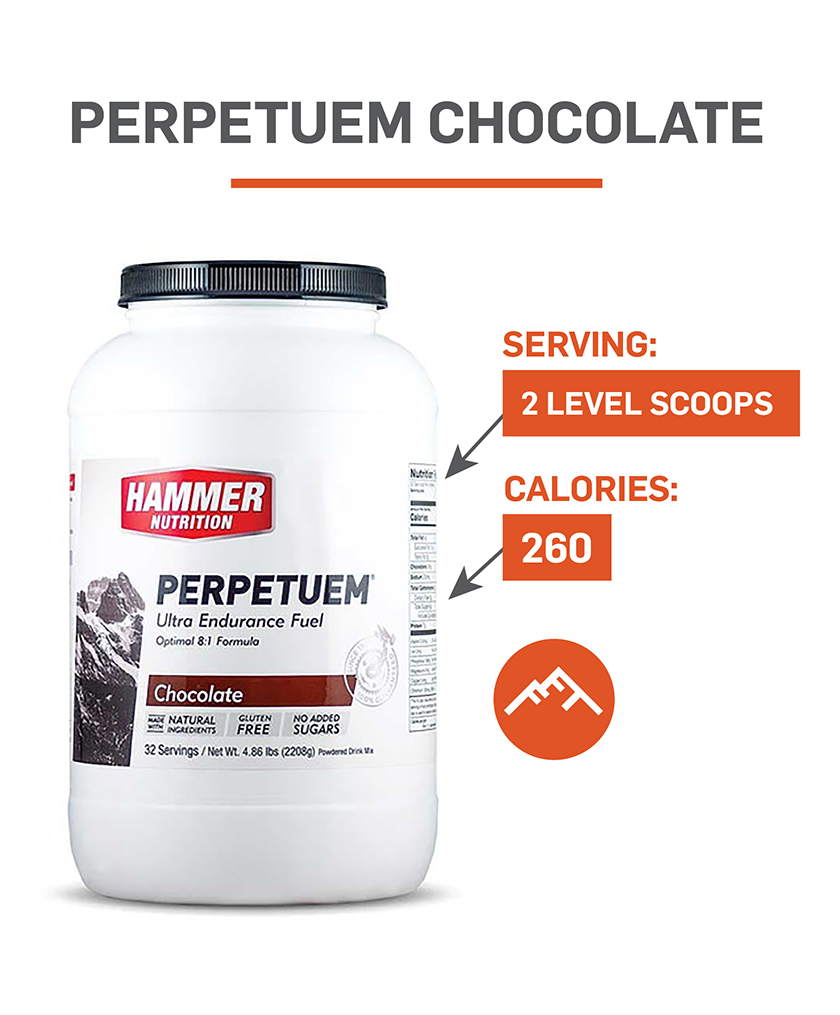 Hammer Nutrition’s 260 calorie PERPETUEM drink helps prevent bonking while hiking.
Hammer Nutrition’s 260 calorie PERPETUEM drink helps prevent bonking while hiking.
How do you recover from bonking?
Usually, the last 4.5 miles of a rim-to-rim Grand Canyon crossing is when I see the wheels fall off of most clients attempting this beast of a hike. Recently, I had a group of guys at varying levels of experience and fitness. One of the less experienced hikers was from Florida, which is known for its distinct lack of hills, so even though he was well trained, I had a pretty good idea that the latter part of the hike would be challenging for him. Sure enough, as we got to that point, his pace started slowing. Because this is the first sign of hitting the wall, we stopped immediately, and I gave him a Gu gel. I always carry a variety of gels and chews with caffeine in my first aid kit. If I can get them into someone soon enough and they can keep it down, then I can usually prevent them from bonking. Prevention is critical and doable, but you need to know what to look for and how to respond.
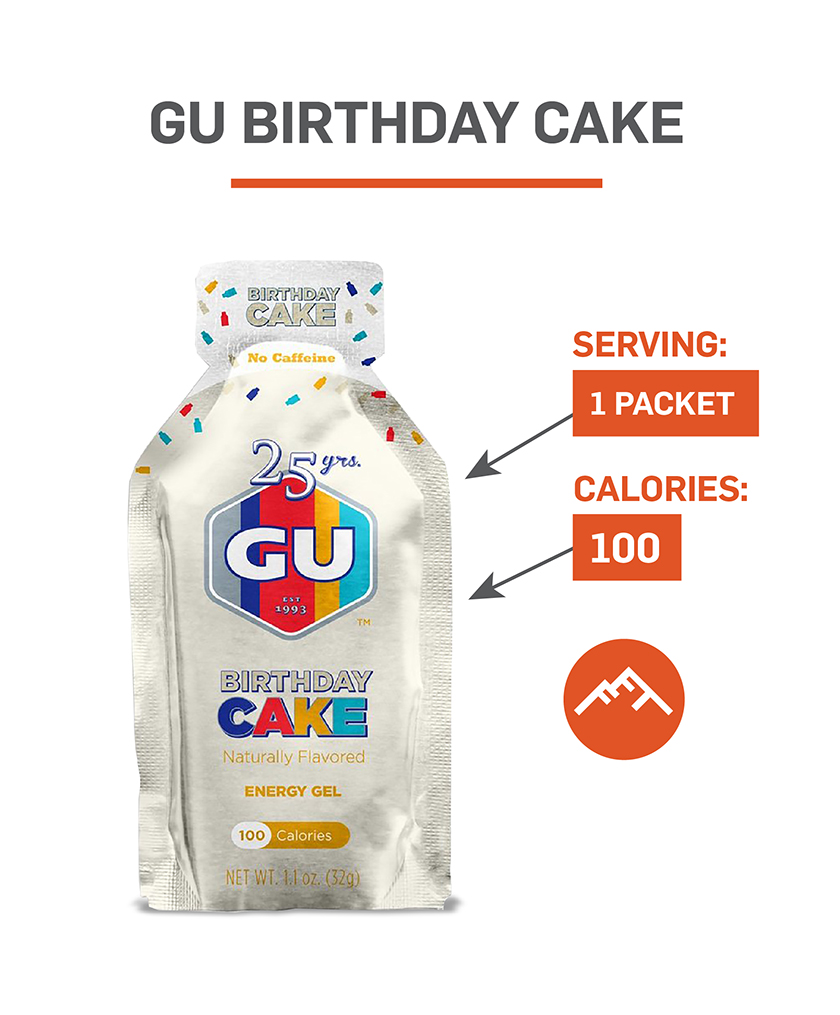 GU Original Energy Gel can easily metabolize if you need a quick bonking remedy.
GU Original Energy Gel can easily metabolize if you need a quick bonking remedy.
The other measure we took with my Florida hiker was to adjust our work-to-rest ratio to something that he thought he could maintain. He was agreeable to moving steadily for about 15-20 minutes before resting for 5 minutes. During his rest period, I made sure he ate and drank. These measures worked very well, and he was able to finish strong in under strong 9 ½ hours. Bonking avoided, success achieved—it was a positive experience for him and his buddies!
If I miss the signs and someone bonks suddenly, they can recover by acting urgently. The quickest way is to give them at least 300 calories of drinks (Perpetuem), gels, or gummies as fast as possible. The lights will usually turn on and they will be able to resume moving after some rest. While resting is good, don’t rest too long. If you rest too much, then you may not get moving again which might not be the best idea if you have limited food and or water.
 Extreme Sport Beans has 50 mg of caffeine, whereas regular Sport Beans have zero caffeine.
Extreme Sport Beans has 50 mg of caffeine, whereas regular Sport Beans have zero caffeine.
Bonking while hiking can even happen to the most experienced hikers
While it is always best to be physically prepared and well-conditioned for longer hikes and endurance activities, hitting the wall can occur to even the best conditioned, most experienced athletes. About 5 years ago, I went on an aggressive training hike with some buddies. I didn’t bring enough food and I turned around early, but not before I bonked. I was careless that day and didn’t have my usual gear and emergency gels. Fortunately, I was lucky, and at just about the time I was really hurting, a couple of mountain bikers came along and had some spare GU gels. Knowing that was exactly what I needed, I thanked them profusely. Within minutes I was feeling better and finished the hike, albeit very humbled given how experienced I was and that I should have known better.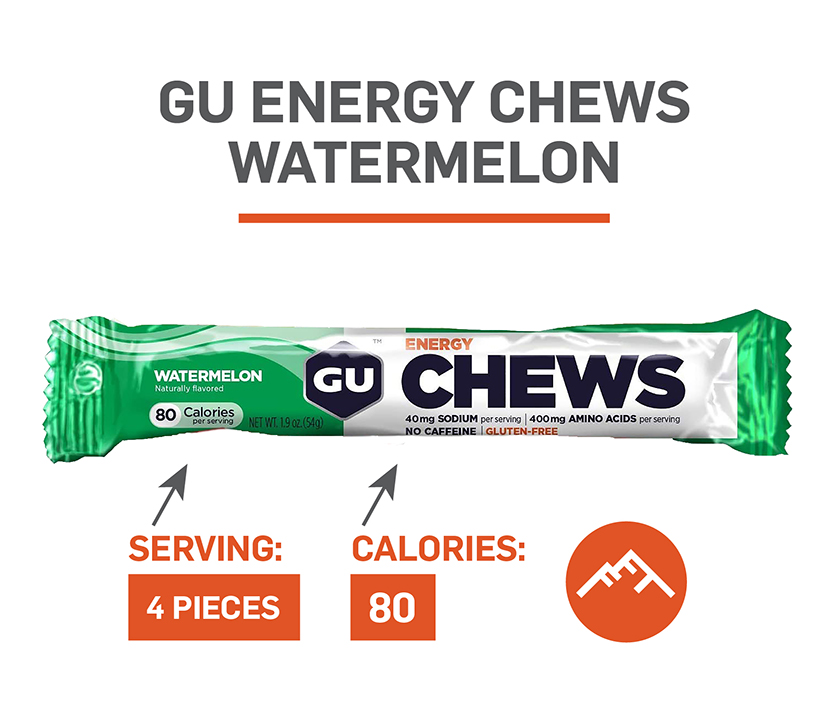 GU Energy Chews packaging has been updated. Check it out…
GU Energy Chews packaging has been updated. Check it out…
What is the worst symptom of bonking while hiking?
As a guide and ultra-endurance athlete, the one symptom I fear the most is nausea. Things can go sideways quickly when you lose your appetite and have an upset stomach that doesn’t allow you to eat and keep food down. Usually this happens to people who have not eaten or drank enough, but also and more importantly, have not trained enough. Their bodies are putting up a full-blown rebellion. While I have some tricks to get most people through these situations, prevention through proper training and preparation is always best.
What does bonking feel like while hiking?
The most effective way to learn how not to accidentally bonk, is to do it intentionally, albeit in a controlled setting. Refrain from eating much the night before and don’t eat anything beforehand on the day of your experiment. Go with a training partner to an accessible area and hike steadily until you hit the wall. BEFORE YOU DECIDE TO DO THIS, HEED THESE RECOMMENDATIONS:
- You need to have zero medical issues (i.e., diabetes, heart issues).
- Need to rule out possibility you will develop heat illness: Perform in a colder climate, or before 10 AM and within 2 hours of sunset in a warmer climate.
- Hydrate properly with water to eliminate dehydration issues.
- Do this on a short loop hike or even around a track or in your neighborhood. You don’t want to be out in the middle of the wilderness where help is not readily available.
Pay close attention to your pace and how your body feels. Bring a phone app or wear a hiking watch that will measure your pace and have your friend (who is not trying to bonk) monitor your progress. Note if you start to get quiet, sensitive to sounds, smells, or other physical sensations as your energy depletes. Be aware if you feel the temperature more acutely, like feeling especially hot or cold. Drink only water since we don’t want to add dehydration into the mix but also don’t want to add any calories for the sake of the experiment. You will know when the wheels have fallen off because you won’t feel like moving forward anymore. It won’t be like you are under severe cardio distress. Your legs will simply feel like bricks, and you will have a distinct lack of energy and desire to exert yourself. When you hit that state, then eat 300 or more calories of energy gels, gummies, or jellybeans as fast as possible. Also drink a high-carb energy drink (HEED) and you should feel the energy flood back into your body.
One final note: try to avoid being the type of person who overestimates their abilities and underestimates the difficulty of the adventure. Train consistently, pay attention to nutrition, and practice eating while exercising. If you do this, then you will stand a fighting chance of never having to experience the painful feeling of having your wheels unexpectedly fall off!
If you want to hire Will Burkhart to guide you on your next hiking or backpacking adventure contact him at 928-274-2424 or will.burkhart@gmail.com.
